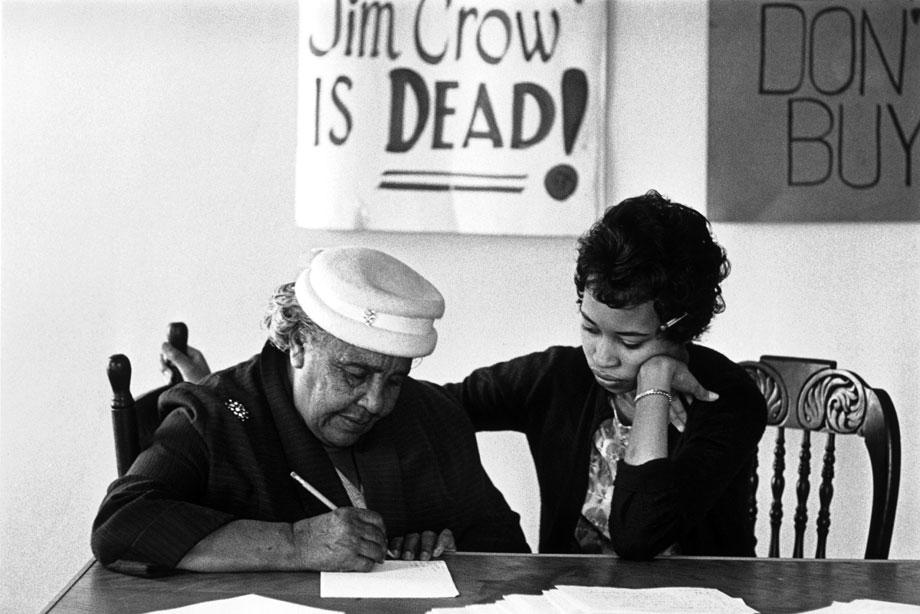
Earlier this week the Virginia House of Delegates refused to restore the rights of nonviolent felons who have paid their debt to society … again. Governor Robert F. McDonnell had made re-enfranchisement a priority of his final year in office. The Governor spoke compellingly of “a nation that believes in redemption and second chances.” His Republican confreres in Richmond were not impressed.
Virginia is one of four states that permanently bars felony offenders from voting or running for office. At present, only the Governor can restore those rights, and that takes a long time, a great deal of work, and, not insignificantly, the commitment of a Governor who thinks it’s worth the time and effort. Most don’t.
In Virginia, as elsewhere, the disenfranchisement of former felons stems from, and adds to, centuries-old histories of racial and ethnic exclusion, oppression, and State violence. Approximately 378,000 Virginians, or 6.8 percent of the Commonwealth, fall under the `felony’ ban. This lifelong ban affects one of every five African Americans in Virginia. That’s no accident. That’s public policy.
These numbers are particularly noxious when one recalls that sixty percent of Virginia felony convictions do not merit jail time, and many are for nonviolent offences.
The lifelong voting ban in Virginia has always been an assault on African Americans immediately, and on communities of color, more generally. In recent years, however, it has also been a weapon in a war against women of color.
The so-called war on drugs has targeted women of color, in particular through conspiracy laws. These laws basically catch women for the crime of intimate relationships with someone involved in the drug trade. The women often, perhaps usually, receive extraordinarily harsh sentences. In Virginia, the case of Santra Lavonne Rucker is illustrative. Her boyfriend was thought to be a major dealer, in Virginia and New York. Rucker was charged with him, as an accomplice, and convicted, despite what many think was flimsy evidence of her actual involvement. But here’s the kicker. Rucker was sentenced to life, lives actually, in prison. Despite overwhelming evidence that, at most, she was a bystander, she was sentenced as a major kingpin in a statewide conspiracy. Santra Lavonne Rucker is still waiting to see the light of day.
Malinda Jenkins, of Lynchburg, Virginia, discovered that, thanks to drug conspiracy laws, absolutely ordinary everyday interactions between intimate partners can result in a narcotics prosecution. Jenkins was brought in with her boyfriend and others. Despite the agents’ testimony that they had never witnessed her or knew of her having any relationship to any drug deals, Jenkins was convicted with the whole crew. On appeal, her conviction was reversed because there was no evidence. It wasn’t insufficient evidence. It was nonexistent evidence.
These are just two cases, but they speak to the last thirty years of the war on drugs and its impact, nationally and in Virginia. In Virginia, being convicted of a drug offense can mean a lifelong ban on welfare benefits as well as a lifelong ban on voting. For women and their children, the ban on welfare has meant an impossible life. This has particularly affected Virginian women of color. That’s no accident. That’s public policy.
Since 1990, Virginia has had one of the highest increases in time served by prisoners and keeps people in prison for longer than most states. This is true for those convicted of nonviolent as well as violent offenses. Only recently has the State, with the establishment of the Virginia Criminal Sentencing Commission, begun to address the possibility of diversion and alternative sentencing. As is so often the case, the Commission was a result of prison overcrowding in the Commonwealth. Nationally, prison overcrowding has often resulted in men being released much earlier than women for exactly the same offense. The State simply needed the men’s beds more than the women’s.
The Virginia Criminal Sentencing Commission applies a point system to each prisoner to establish `risk’ of recidivism. For drug and fraud offenses, women are deemed a much, much better `risk’ than men, nine times better. For larceny, men are a somewhat better risk, about 1.5 times better. In December 2012, these numbers translated as follows: 635 drug cases for review; 951 fraud cases; 185 larceny cases. In the overwhelming number of cases, then, women are a much better prospect for anywhere but behind bars. That’s according to the Commonwealth of Virginia.
It’s time to return the right to vote to those who have paid their debt, especially when much of that debt is the result of legerdemain. It’s time to stop the war on communities of color. It’s time to stop the war on women of color. Do it now, Virginia.
(Photo Credit: Eve Arnold/Magnum Photos/Slate)